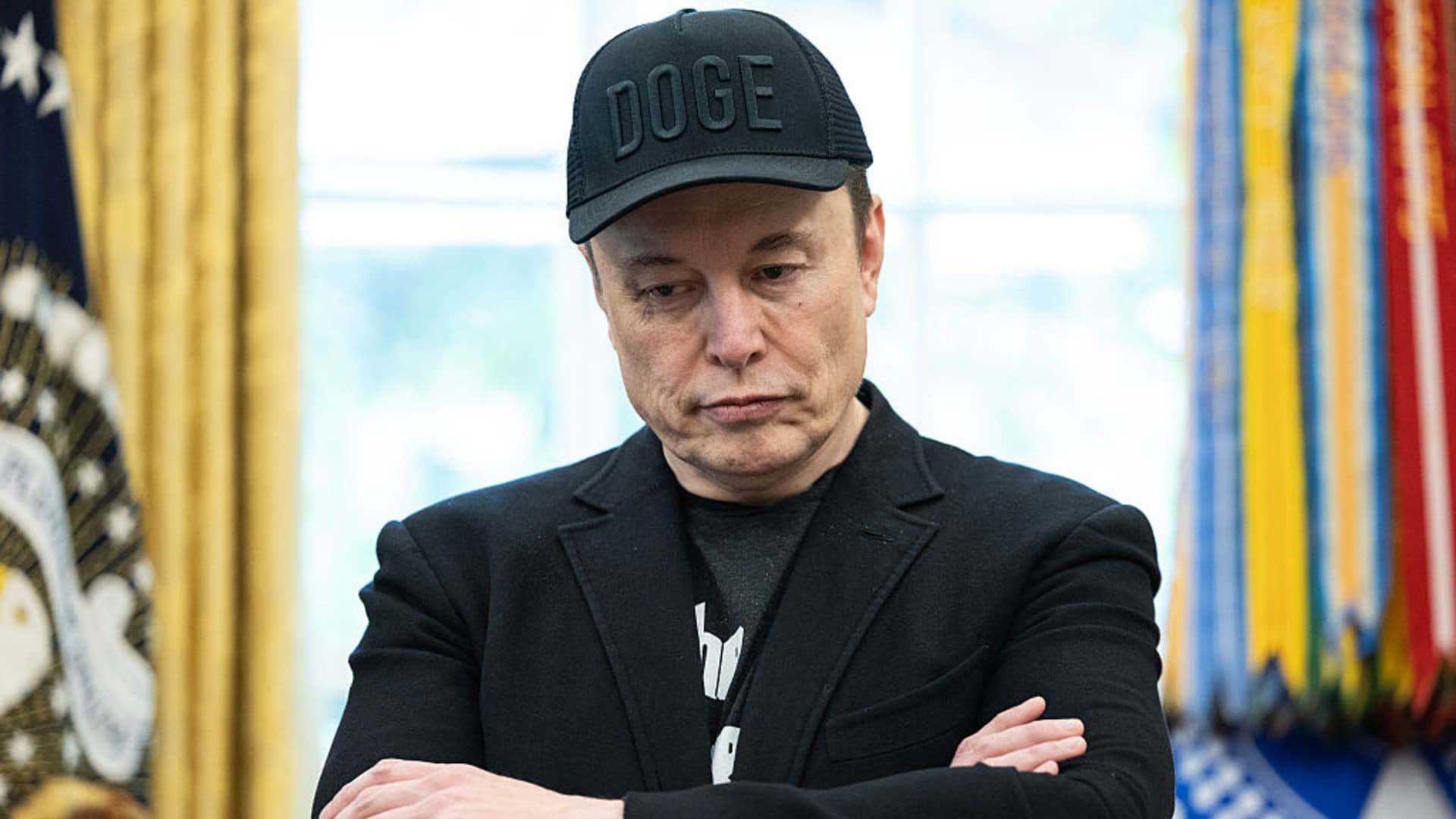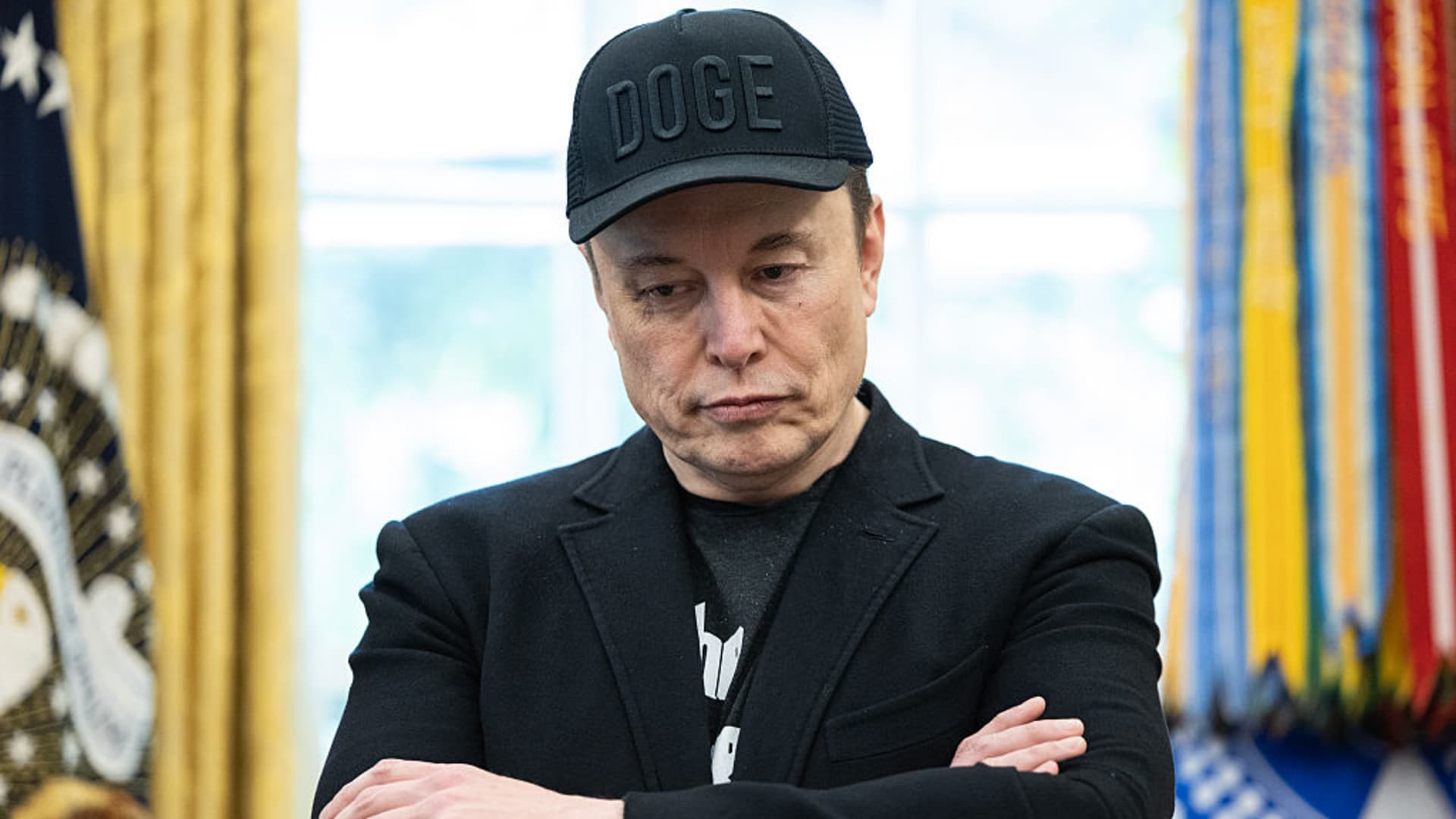Tesla’s Tumultuous Times: A Deep Dive into the Recent Stock Plunge
Introduction: The Fall of an EV Titan
Tesla, once the darling of the electric vehicle (EV) market, is now grappling with a series of challenges that have sent its stock into a tailspin. The company, which has long been synonymous with innovation and disruption, is now facing declining sales, missed expectations, and a stock price that has taken a significant hit. This analysis explores the multifaceted reasons behind Tesla’s recent struggles, examining the interplay of market dynamics, internal challenges, and external pressures that have contributed to this turbulent period.
The Numbers Don’t Lie: A Sales Slump
The most immediate cause for concern is the reported decline in Tesla’s automotive sales. Recent reports highlight a consecutive quarter of declining figures, with some sources pointing to the worst quarterly sales decline in over a decade. This drop in sales directly impacts revenue, which is further compounded by a drop in net income, painting a grim picture for investors. The numbers speak for themselves: a double-digit drop in top and bottom lines is projected, triggering investor anxiety and a subsequent sell-off.
The decline in sales is not limited to a single market but is evident across key regions, including the United States, Europe, and China. In Europe, for instance, Tesla’s market share has seen a significant slump, largely due to increased competition from established automakers like Volkswagen and BMW, which have ramped up their EV offerings. The saturation of the EV market, coupled with aggressive pricing strategies from competitors, has put Tesla in a precarious position.
The Musk Factor: Controversy and Distraction
Elon Musk, the charismatic yet often controversial CEO of Tesla, is a double-edged sword. While his visionary leadership has propelled Tesla to unprecedented heights, his ventures into other areas and pronouncements on various topics have raised concerns about his focus and potential distractions. Recent reports even suggest a correlation between Musk’s political stances and a negative impact on Tesla’s brand and sales. The announcement of a potential new political party further fueled investor unease, contributing to a sharp stock drop.
Musk’s involvement in other ventures, such as SpaceX, Neuralink, and The Boring Company, has led to speculation about his divided attention. While these ventures have contributed to his personal brand and overall influence, they have also raised questions about his ability to focus on Tesla’s core business. The recent controversies surrounding Musk’s public statements and actions have further exacerbated investor concerns, leading to a loss of confidence in Tesla’s leadership.
Market Saturation and Increased Competition
Tesla’s dominance in the EV market is no longer a given. The rise of competitors like BYD, Volkswagen, and BMW, offering increasingly compelling EV alternatives, is intensifying the pressure. This increased competition is chipping away at Tesla’s market share, particularly in key markets like Europe, where sales have seen a significant slump. The market is becoming saturated, and consumers now have more choices than ever before. Tesla needs to adapt and innovate to maintain its competitive edge.
The competitive landscape is further complicated by the entry of new players, including legacy automakers and startups, all vying for a piece of the EV pie. The rapid advancements in battery technology, autonomous driving capabilities, and overall vehicle performance have leveled the playing field, making it increasingly difficult for Tesla to differentiate itself. The company’s once-unassailable lead in the EV market is now being challenged on multiple fronts, requiring a strategic response to regain its competitive advantage.
External Pressures: Tariffs and Trade Wars
External economic factors also play a significant role. The looming threat of auto tariffs, particularly those proposed by figures like former President Trump, casts a shadow of uncertainty over the industry. Tariffs could significantly increase the cost of imported vehicles, potentially impacting Tesla’s pricing strategy and competitiveness in certain markets. Trade wars and geopolitical tensions add further complexity to the global automotive market, impacting supply chains and consumer confidence.
The uncertainty surrounding trade policies and tariffs has created a challenging environment for Tesla, particularly in markets where it relies on imports. The company’s global supply chain is vulnerable to disruptions caused by trade wars and geopolitical tensions, which can impact production targets and delivery timelines. The need for Tesla to navigate these external pressures effectively is crucial for maintaining its competitive position in the global market.
Production Challenges and Supply Chain Disruptions
While not explicitly stated in all provided snippets, underlying production challenges and supply chain disruptions could be contributing factors to the sales decline. The EV industry relies heavily on critical minerals and components, and any disruption to the supply chain can impact production targets. Furthermore, ramping up production of new models or expanding production capacity can be a complex undertaking, potentially leading to temporary bottlenecks and delays.
Tesla’s production challenges are further compounded by the need to scale up operations to meet growing demand. The company’s reliance on a global supply chain makes it vulnerable to disruptions caused by geopolitical tensions, natural disasters, and other unforeseen events. The need for Tesla to address these production challenges and ensure a stable supply chain is critical for maintaining its competitive edge and meeting customer expectations.
Profit Margins Under Pressure
The EV market is becoming increasingly price-sensitive. To compete effectively, Tesla may be forced to lower prices, which can squeeze profit margins. A report mentioned a 16% drop in profit, indicating that Tesla is feeling the pressure to maintain profitability in a more competitive landscape. Balancing sales volume with healthy profit margins is a key challenge for Tesla moving forward.
The pressure on profit margins is further exacerbated by the need to invest in research and development to stay ahead of the competition. Tesla’s commitment to innovation and technological advancements requires significant investment, which can impact short-term profitability. The company’s ability to balance these competing priorities is crucial for its long-term success in the EV market.
The Robotaxi Gamble: A Risky Bet?
Tesla’s future plans heavily rely on the development and deployment of robotaxis. While the potential of autonomous vehicles is undeniable, the technology is still in its early stages and faces significant regulatory and technological hurdles. This reliance on a future technology introduces a level of uncertainty and risk that investors may be wary of, especially given the current challenges facing the company. Is Tesla betting too much on a future that is not yet guaranteed?
The robotaxi gamble is a high-risk, high-reward strategy that could either propel Tesla to new heights or leave it vulnerable to competition. The regulatory landscape for autonomous vehicles is complex and evolving, requiring Tesla to navigate a maze of legal and technical challenges. The company’s ability to successfully deploy robotaxis will be a critical factor in its long-term success and investor confidence.
Brand Perception and Customer Sentiment
Beyond the numbers, shifts in brand perception and customer sentiment can also impact sales. While Tesla still enjoys a strong brand reputation among many consumers, controversies surrounding Musk and concerns about quality control could be eroding customer loyalty. Social media chatter and online reviews can quickly influence public opinion, and negative sentiment can translate into lower sales.
The need for Tesla to address these brand perception issues is crucial for maintaining customer loyalty and attracting new buyers. The company’s ability to manage its public image and address customer concerns effectively will be a key factor in its ability to weather the current storm and emerge stronger.
Navigating the Road Ahead: Tesla’s Options
Faced with these challenges, Tesla needs to take decisive action to regain its footing. Several strategies could help the company navigate the turbulent road ahead:
- Focus on Execution: Streamlining production, addressing quality control concerns, and ensuring timely delivery of vehicles are crucial for satisfying customer demand and maintaining a positive brand image.
- Innovation and Differentiation: Tesla needs to continue innovating and developing cutting-edge technologies to differentiate itself from the competition. This includes advancements in battery technology, autonomous driving capabilities, and overall vehicle performance.
- Strategic Pricing: Carefully balancing pricing strategies to remain competitive while maintaining healthy profit margins is essential.
- Diversification: Exploring new markets and diversifying its product offerings could help Tesla reduce its reliance on specific regions or vehicle segments.
- Managing the Musk Factor: Finding a way to mitigate the potential distractions and controversies associated with Elon Musk’s public persona is crucial for maintaining investor confidence and protecting the Tesla brand.
- Building Stronger Customer Relationships: Investing in customer service and addressing customer concerns promptly can help improve customer satisfaction and loyalty.
Conclusion: A Crossroads for Tesla
Tesla’s recent stock plunge is a symptom of deeper challenges facing the company. Declining sales, increased competition, external pressures, and internal distractions are all contributing factors. While Tesla still possesses significant strengths, including its brand recognition, technological expertise, and Supercharger network, it needs to address these challenges proactively to regain its momentum and secure its future in the rapidly evolving EV market. The road ahead will undoubtedly be challenging, but with strategic planning, focused execution, and a willingness to adapt, Tesla can overcome these obstacles and reclaim its position as a leader in the automotive industry.
The Electric Storm: Can Tesla Weather the Turbulence?
The current situation represents a critical juncture for Tesla. Will the company successfully navigate these challenges and emerge stronger, or will it continue to struggle in the face of increasing competition and market pressures? The answer to that question will depend on Tesla’s ability to adapt, innovate, and execute its strategic vision effectively. The world is watching to see if the electric pioneer can weather the turbulence and continue to electrify the future of transportation.












